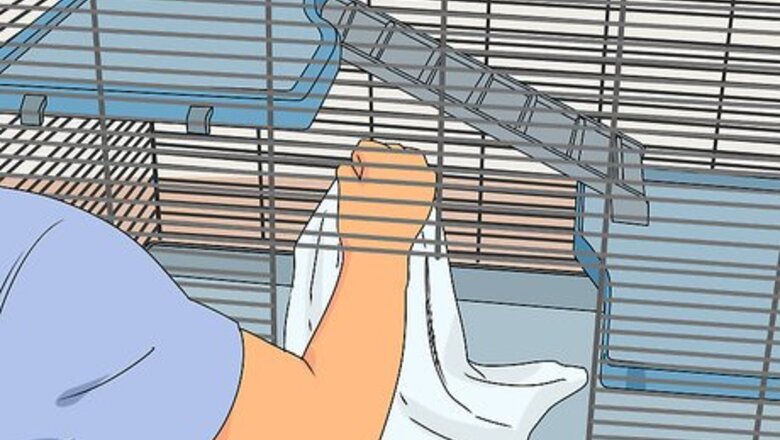
views
X
Research source
Giving Care Right After Paralysis Occurs
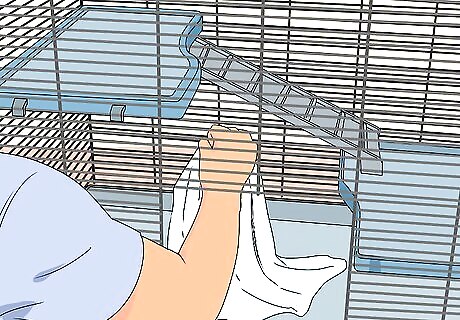
Do a daily assessment of your rat's health. Everyone that has a pet rat should make sure their rat is functioning normally every day. When you go to feed your rat or clean its cage, make sure that it is moving normally. Look closely to see if it is using its back legs. Signs that your rat may be losing mobility include a hunched posture, a tail that's hanging uncharacteristically low, shuffling or stumbling, lying in urine or waste, and lack of movement or energy. If you spot a problem early, you can get your rat treatment more quickly and can make adjustments to its care right away.
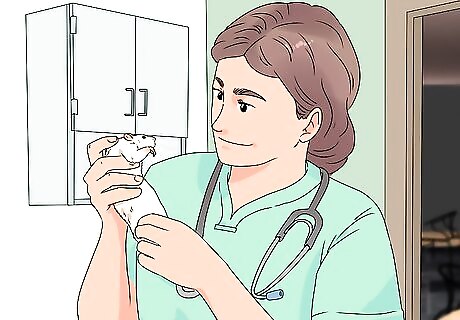
Take your rat to a vet right away if you suspect paralysis. Call your veterinary office and tell them that you are bringing in your pet due to an emergency. This will help them prepare for your arrival. Once you are there, the vet can assess the rat to try to diagnose the problem. If there is a serious medical condition, it might be causing other problems in addition to paralysis. This is one of the reasons its important to have your rat checked out by a professional right away.

Restrict the rat's movement so it doesn't hurt itself. Put the rat in a small enclosure, such as their carrier instead of their regular cage. It may be hard to put your pet in a small space but it's for the animal's own good. This will ensure that if the rat panics or tries to do too much physically, it's less likely to injure itself. For example, this will restrict your rat's ability to try and climb. Be sure to remove your rat’s exercise wheel from the cage. However, be sure to give your paralyzed rat extra attention so it doesn't get too sad and lonely.Tip: Since it's recommended you house multiple rats together, this will usually mean separating the rat from its cage mate at least temporarily.
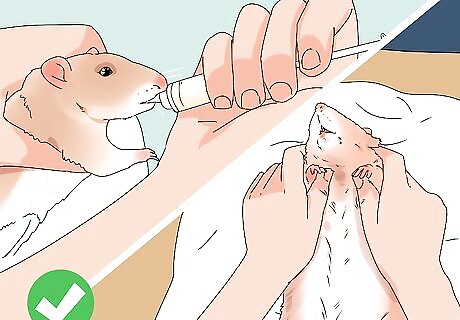
Follow your veterinarian's suggestions for treatment and care. Once your vet assesses your rat's healthy, they will tell you what their diagnosis is and what they suggest for treatment. The suggestions for treatment will vary depending on your rat's specific condition, but could include giving your rat medication, massaging the affected limbs, or rehabilitation. Ask your vet as many questions as you want. It's important for you to understand your rat's condition so that you can care for it well. Some paralyzed rats have successfully recovered from their condition with the right type of physical therapy. Talk to your veterinarian about options for your pet. At the very least they may be able to refer you to a specialist that works with injured animals or rodents in particular. Your rat may need additional treatments for the underlying cause of the paralysis or additional problems that
Setting Up Appropriate Housing For a Paralyzed Rat
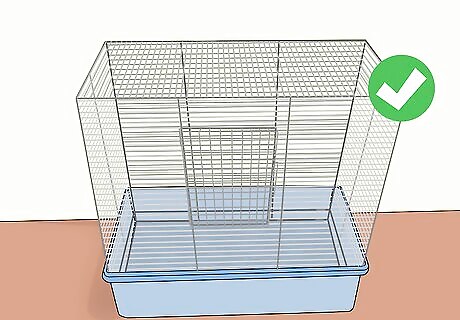
Get a cage that doesn't have wire flooring. This is actually important for all rats because the floor can easily injure a rat. However, a paralyzed rat is at even greater risk of getting injuries to its hind legs or tail if either get stuck in between the wires. In addition, wire flooring irritates the skin of a paralyzed rat's lower belly as it drags itself around. Cages with solid bottoms are available at pet supply stores and from online retailers. If you don't want to buy a whole new cage, you can convert a cage with a wire floor by adding a piece of plywood or metal to the bottom. You can also just put multiple layers of newspaper on the bottom of the cage every day to make a solid floor for your rat.
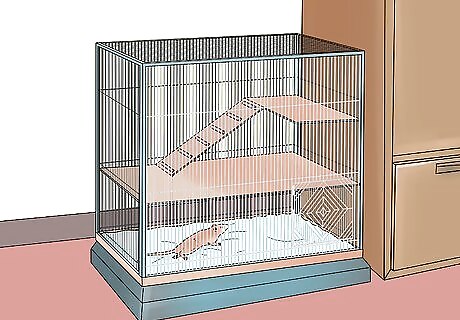
House your rat in a one-level cage. Even if your paralyzed rat does recover quite a bit, it will have a loss of agility in its legs. However, a paralyzed rat may try to continue to climb but they are at greater risk of falling due to that loss of agility. Because of this, it's best to get a one-level cage in order to take away the risk to your rat's health. If your rat has paralysis in its legs, all items your rat uses need to be in close proximity. This will minimize your rat's need to drag itself around on its belly. Remember that your rat can have a fulfilling and fun life in a one level cage, even if it can't do all the physical things it once did.
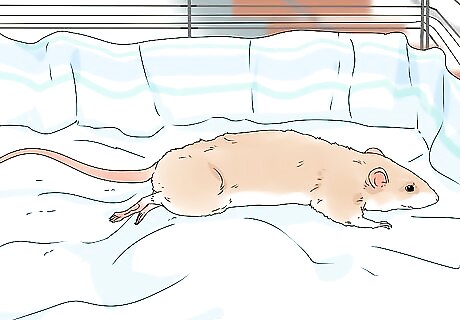
Use newspaper or cloth instead of the usual wood chips. You need to make the ground less rough for your rat once it becomes paralyzed. The bedding needs to be soft because the rat will be dragging its belly and hind legs on it as it moves around. Cover the entire bottom surface of the cage with several layers of flat sheets of newspaper. This will allow the rat to move around without hurting itself while still absorbing the rat's waste, food, and water that might be spilled in the cage. If you use cloth on the bottom of the cage, such as old towels or sheets, you can launder it and use it repeatedly.Tip: This type of bedding needs to be changed more often than traditional wood chips. It's best to replace it daily.
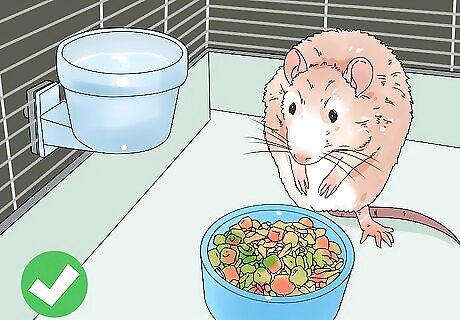
Get food and water dishes that are accessible. Your paralyzed rat may not be able to use dishes that require it to get up on its hind legs. You may need a bowl with lower sides for the food than you would typically use for feeding a rat. Put a low dish of food close to the area where your rat spends most of its time. Also position your rat's water bottle as low as possible so that it can easily get its mouth onto the stem. Look at your local pet store or on the websites of online retailers for dishes that are bottom heavy but have short sides. These will allow your rat to get to its food but will prevent it from knocking the whole dish over every time it eats. Remember that your rat won't be able to sit on its haunches to drink and eat, so make sure it can get to food and water from the height of its front legs.
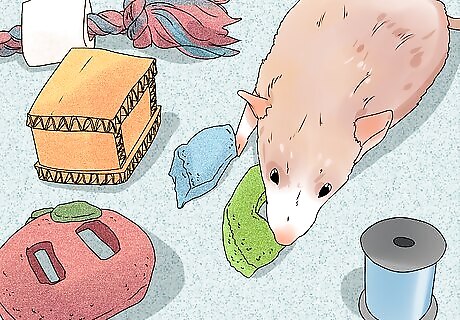
Provide toys and activities that your paralyzed rat can easily use. Your rat will need new ways to entertain itself once it becomes paralyzed. Pick toys and puzzles that your rat can access from the ground and put them in areas the rat can easily get to. Some good options include classic rat toys like chew toys, feather toys, tubes on the ground, treat balls, and boxes on their side. You can also continue to play and interact with your rat like you always have. Encouraging it to play with its toys and playing games with it will keep your rat happy and will strengthen the bond you have with your pet.
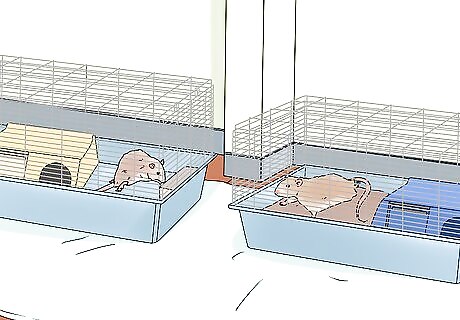
House your rat alone if it gets in conflicts with your other rats. If housing your paralyzed rat with other rats, watch how they get along over the course of several weeks. If the other rats bully or trample over your paralyzed rat, it will not be able to defend itself easily. The paralyzed rat should be housed separately if this occurs. If the other rats are behaving themselves, group housing is preferred. Not only are rats social creatures, but friendly cage mates can help a paralyzed rat keep clean by grooming it. Be sure to always give a single-housed rat lots of attention! You can make sure it doesn't get lonely by playing with it and handling it often.
Giving Daily Care to Your Paralyzed Rat
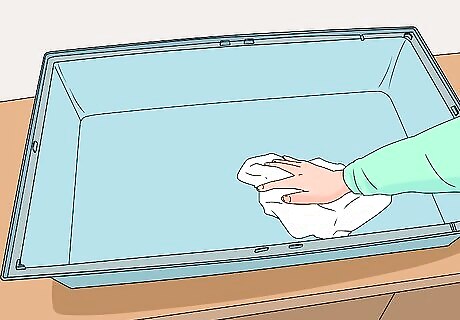
Keep the cage clean. Change the bedding as often as it gets dirty, even if this means having to do it multiple times a day. Wipe down all of the surfaces with a rat-safe cleanser to keep them clean. Also wash your rat's food dishes and toys on a weekly basis. It's very important to keep the cage of a paralyzed rat clean because it is more at risk for health problems than a rat with full mobility due to the likelihood of it having a compromised immune system.
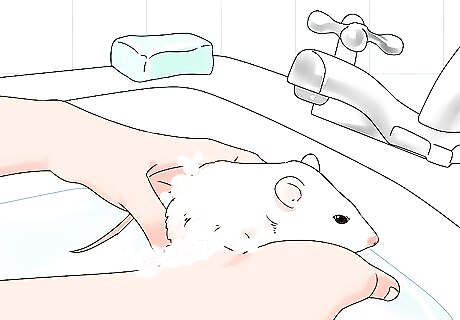
Clean your rat's body on a daily basis. Your paralyzed rat won't be able to clean its body as thoroughly as it used to before paralysis. Because of this, you will need to wash its body with pet-safe soap, water, and a soft rag. Be sure to focus your cleaning on parts of its body that come into contact with the ground, including its belly and its rear legs. However, you also need to wipe off the rat's anus to keep that area clean. Keeping your rat clean will help it avoid illness and health problems. Dry your rat off with a towel after you clean it. This is a good time to get some quality time with your rat and snuggle with it a bit. Tip: You can check if the rat is clean by sniffing it. If it smells like urine, it's time to clean your rat.

Monitor your rat's health closely. At the first sign of any illness bring it to a vet. A paralyzed rat is more prone to bladder infections and pneumonia than most rats. Early treatment is very important, so it's better to be safe than sorry when it comes to your rat's health. Classic signs of illness to be on the lookout for include: weight loss, lack of appetite, sores, sneezing, and runny nose.
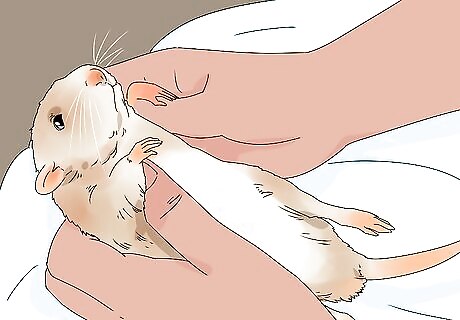
Watch for injuries or infection on the rat's lower body or legs. Your rat may not feel any injuries, or may even start self-injuring due to lack of sensation. Sores are especially likely if the rat spends most of the time lying still in one position. Take the rat back to the vet if any sores develop.




















Comments
0 comment